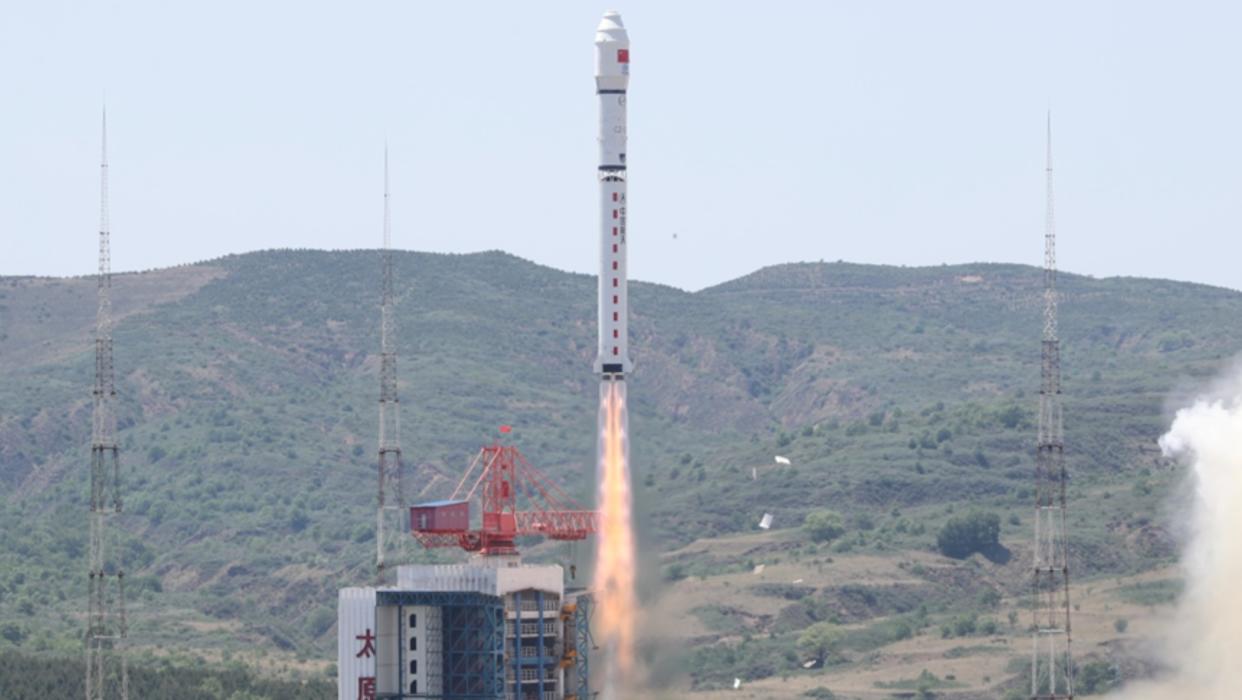China launches national-record 41 satellites on single rocket (video)

China just broke its own national record for satellites launched by a single rocket.
A Long March 2D rocket lifted off from Taiyuan Satellite Launch Center in north China Thursday (June 15) at 1:30 a.m. EDT (0530 GMT, or 13:30 local time). Insulation tiles fell away from the rocket as it rose into blue skies above the hills surrounding Taiyuan, and shock diamonds were visible in its purple exhaust plume.
A total of 41 small satellites were released into orbit. These were the Jilin-1 GF06A0 satellites 1-30, Jilin-1GF03D 19-26, HEGS-1 and Jilin-1 PT02A01/02 for Chinese commercial remote sensing satellite company Changguang Satellite (CGST).
Related: The latest news about China's space program

The launch broke the previous Chinese record of 26 satellites on a single launch, set just days earlier by a Lijian 1 rocket developed by commercial company CAS Space. The overall record is 143 satellites, set during SpaceX's Transporter-1 rideshare mission in January 2021.
The satellites launched on Thursday mainly add to CGST's Jilin-1 commercial remote sensing constellation. CGST aims to put more than 300 satellites in orbit by 2025, more than doubling its earlier plan of launching 138 Jilin-1 satellites by the end of that year.
The Jilin-1 Gaofen 06A17-18 satellites are small, light, high-resolution optical remote sensing satellites also known as Golden Bauhinia satellites 37-38. They're part of the Golden Bauhinia constellation planned by the Hong Kong Aerospace Science and Technology Group. HEGS-1 is a satellite jointly developed by CGST and Aerospace (Xinjiang) Science and Technology Research Institute Co., Ltd. It's the first satellite for a constellation focused on aiding the social development of Xinjiang and the construction of the Belt and Road project.
The PT02A01 and 02 satellites are described by CGST as being low-cost, high-capacity, high-resolution remote sensing satellites carrying the company's self-developed laser communication loads. They'll be used to verify high-speed inter-satellite and satellite-to-ground communication technologies.
RELATED STORIES:
— China wants to launch over 200 spacecraft in 2023
— Chinese launch company tests vertical rocket landings with jet-powered prototype (video)
— China launches 3 astronauts to Tiangong space station on Shenzhou 16 spacecraft (video)
CGST is a satellite manufacturer and operator based in Jilin in northeast China, spun off from an institute under the Chinese Academy of Sciences.
The 135-foot-tall (41 meters) Long March 2D can carry 2,866 pounds (1,300 kilograms) of payload to a 435-mile-high (700 kilometers) sun-synchronous orbit. The mission was the 25th launch carrying Jilin-1 satellites.
The launch was China's 24th of the year. The country plans to launch more than 200 spacecraft across 2023.

